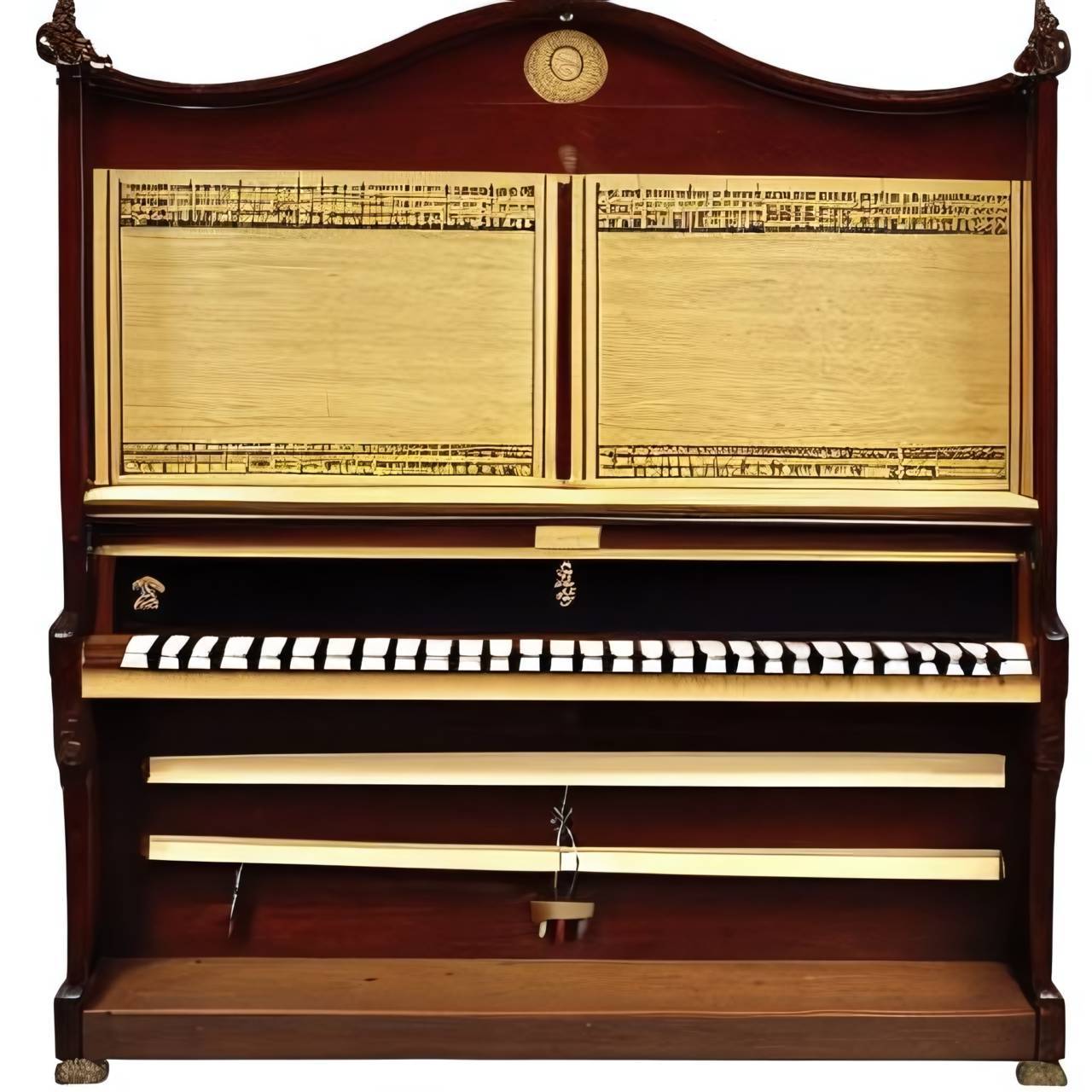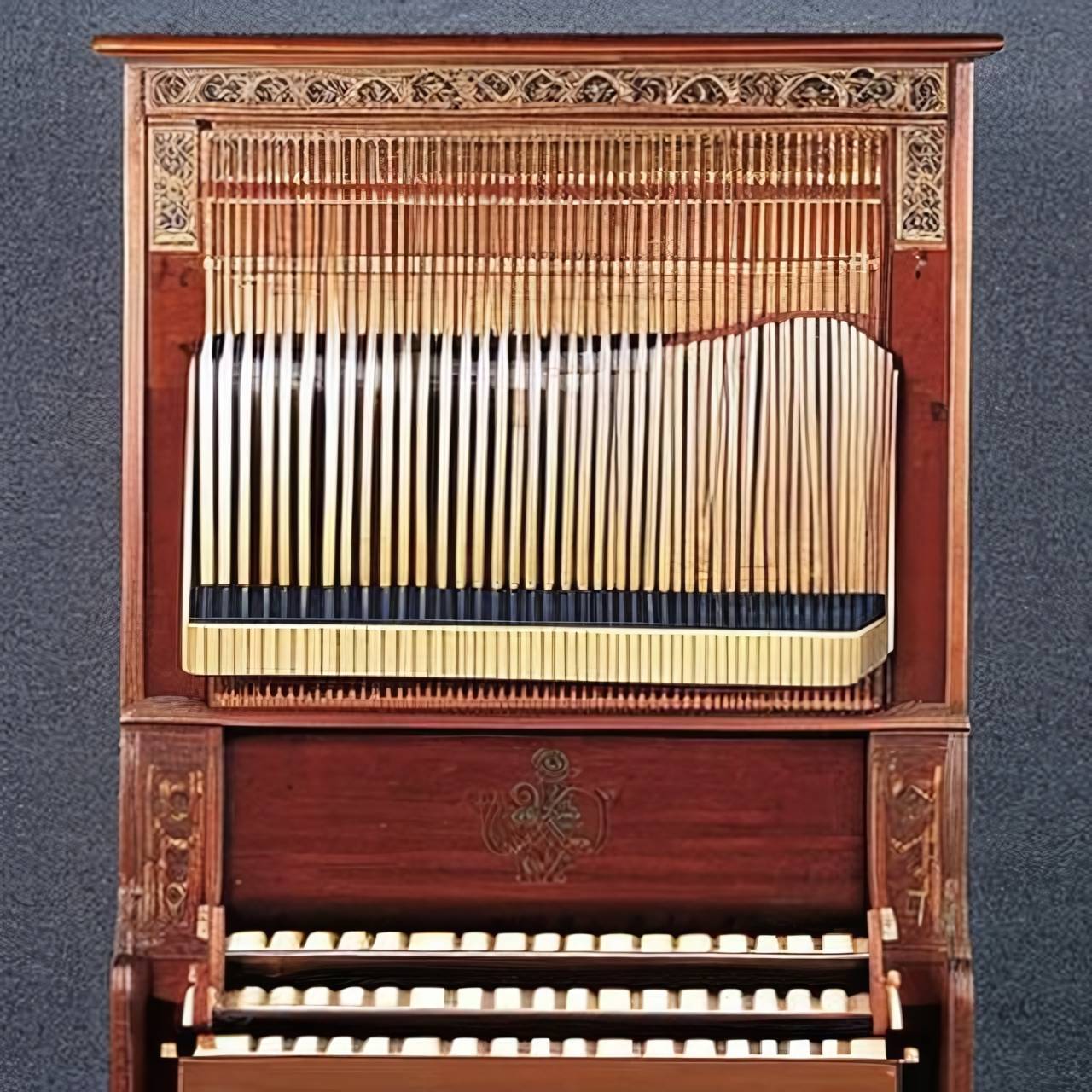Have you ever heard of the clavichord? It is a keyboard instrument that was widely used from the 14th to the 18th century, especially in Germany, Scandinavia and the Iberian Peninsula. It is one of the ancestors of the modern piano, but it has a very different mechanism and sound. In this blog post, I will tell you more about the history, features and music of this fascinating instrument.
The Invention of the Clavichord
The clavichord was invented in the early 14th century, probably in Germany. It was based on the monochord, a simple instrument consisting of a single string stretched over a wooden box. The monochord had a movable bridge that could be used to divide the string into different lengths and produce different pitches. The clavichord improved on this idea by adding a keyboard with small metal blades called tangents that struck the strings and determined their vibrating length. The name clavichord comes from the Latin words clavis (key) and chorda (string).
The earliest mention of the clavichord dates from 1404, in a German poem called “Der Minne Regeln” (The Rules of Love). The poem praises the clavichord and the harpsichord (another keyboard instrument with plucked strings) as the best instruments to accompany melodies.
The Features of the Clavichord
The clavichord is usually rectangular in shape, with a wooden case and lid that are often highly decorated, painted or inlaid. The strings run horizontally from the tuning pins at the right end to the hitch pins at the left end. Between them, there is a bridge that transmits the vibrations to the soundboard. Under each key, there is a tangent that rises and strikes the string when the key is pressed. The tangent also acts as a bridge, dividing the string into two segments: one that vibrates and produces sound, and one that is silenced by felt strips woven through the strings. When the key is released, the tangent falls away and the whole string is damped by the felt.
The clavichord has a range of about 3 1/2 to 5 octaves, with one or two strings for each note. Some clavichords have independent strings for each key, while others have shared strings for adjacent keys that produce notes that are unlikely to be played together. The former are called unfretted or bundfrei, while the latter are called fretted or gebunden.
The Sound of the Clavichord
The clavichord has a very soft and delicate sound, which makes it suitable for intimate music-making in small rooms. It is not loud enough for larger performances or ensembles. However, it has a unique advantage over other keyboard instruments: it can produce dynamic variation (piano, forte, crescendo, diminuendo) by the player’s touch alone. By varying the pressure on the key, the player can control the volume and tone of the note. The clavichord can also produce vibrato or bebung by wiggling the finger on the key. These expressive effects make the clavichord a very personal and sensitive instrument.
The Music of the Clavichord
The clavichord was popular from the 16th to the 18th century, but it reached its peak in the second half of the 18th century, especially in Germany. Many composers wrote music for or played on the clavichord, such as J.S. Bach , C.P.E. Bach , W.F. Bach , J.C.F. Bach , J.C. Bach , Haydn , Mozart , Beethoven , Schubert and Mendelssohn . Some of them even owned their own clavichords and used them for practice or composition.
The music written for or played on the clavichord reflects its intimate and expressive nature. It often consists of sonatas, fantasias, preludes, fugues, variations, dances and songs. Some examples are:
– C.P.E. Bach’s “Prussian” and “Württemberg” Sonatas
– J.S. Bach’s “Well-Tempered Clavier” and “Goldberg Variations”
– Haydn’s “London” Sonatas
– Mozart’s “Fantasia in D Minor” and “Rondo in A Minor”
– Beethoven’s “Moonlight” Sonata and “Für Elise”
– Schubert’s “Impromptus” and “Moments Musicaux”
The Revival of the Clavichord
The clavichord fell out of use by 1850, as the piano became the dominant keyboard instrument. However, in the late 19th and early 20th century, there was a revival of interest in the clavichord, led by Arnold Dolmetsch , a pioneer of early music performance and instrument making. He built several clavichords based on historical models and played them in concerts and recordings. He also wrote a book called “The Interpretation of the Music of the XVIIth and XVIIIth Centuries”, which advocated the use of the clavichord for authentic performance practice.
Since then, many other musicians, scholars and enthusiasts have contributed to the revival and appreciation of the clavichord. Some of them are:
– Violet Gordon-Woodhouse, a British harpsichordist and clavichordist who popularized the instrument in the early 20th century
– Ralph Kirkpatrick, an American harpsichordist and clavichordist who wrote a book called “The Art of the Fugue: Bach Fugues for Keyboard, 1715–1750”
– Gustav Leonhardt, a Dutch harpsichordist, organist and conductor who played and recorded many works on the clavichord
– Christopher Hogwood, an English harpsichordist, conductor and musicologist who founded the Academy of Ancient Music and played on many historical clavichords
– Bernard Brauchli , a Swiss-American clavichordist, organist and musicologist who wrote a book called “The Clavichord”
– Derek Adlam, an English clavichord maker, player and researcher who founded the British Clavichord Society
– Joan Benson, an American clavichordist, pianist and teacher who developed a method of playing the clavichord with two fingers per hand
– Peter Bavington, an English clavichord maker, player and author who wrote a book called “Clavichord Tuning and Maintenance”
Today, there are many clavichord players, makers, societies and festivals around the world. The clavichord is still a quiet but expressive instrument that can charm and touch those who listen to it.
Conclusion
The clavichord is a keyboard instrument that has a long and rich history. It was invented in the 14th century and was popular until the 18th century. It has a soft and delicate sound that can vary in volume and tone by the player’s touch. It can also produce vibrato by wiggling the finger on the key. It is suitable for intimate music-making in small rooms. Many composers wrote music for or played on the clavichord, such as Bach, Haydn, Mozart, Beethoven and Schubert. The clavichord fell out of use by 1850 but was revived in the late 19th century by Arnold Dolmetsch. Since then, many other musicians, scholars and enthusiasts have contributed to the revival and appreciation of the clavichord. Today, there are many clavichord players, makers, societies and festivals around the world. The clavichord is still a quiet but expressive instrument that can charm and touch those who listen to it.
Reference
– https://www.theclavichord.com
– The Clavecin en France: http://clavecin-en-france.org/
– Clavichord – Wikipedia. https://en.wikipedia.org/wiki/Clavichord.
– Clavichord | musical instrument | Britannica. https://www.britannica.com/art/clavichord.
– Bavington, P. (2009). Clavichord tuning and maintenance. London: The British Clavichord Society.
– Brauchli, B. (1998). The clavichord. Cambridge: Cambridge University Press.
– Dolmetsch, A. (1915). The interpretation of the music of the XVIIth and XVIIIth centuries. London: Novello.
– Kirkpatrick, R. (1977). The art of the fugue: Bach fugues for keyboard, 1715–1750. New Haven: Yale University Press.
Tags
Divi Meetup 2019, San Francisco
Related Articles
Unappreciated Greatness
Life and Legacy of Jahangir of the Mughal Empire. Jahangir ruled over one of the largest empires in human history during his lifetime, yet few people outside of South Asia have heard of him. I aim to shed light on the life and legacy of this remarkable figure,...
The Plague Doctor’s Diary
A Personal Account of the Turin Epidemic of 1656. I am writing this diary to record my experiences and observations as a plague doctor in Turin, the capital of the Duchy of Savoy, during the terrible epidemic that has afflicted this city and its surroundings since the...
The Timeless Beauty of Bustan
Unveiling the Secrets of Saadi Shirazi's Masterpiece.In the realm of Persian literature, few works have captured the essence of love, spirituality, and morality quite like Bustan (The Orchard) by Saadi Shirazi. This 13th-century masterpiece has left a lasting impact...
Stay Up to Date With The Latest News & Updates
Explore
Browse your topics of interest using our keyword list.
Join Our Newsletter
Sign-up to get an overview of our recent articles handpicked by our editors.
Follow Us
Follow our social media accounts to get instant notifications about our newly published articles.









